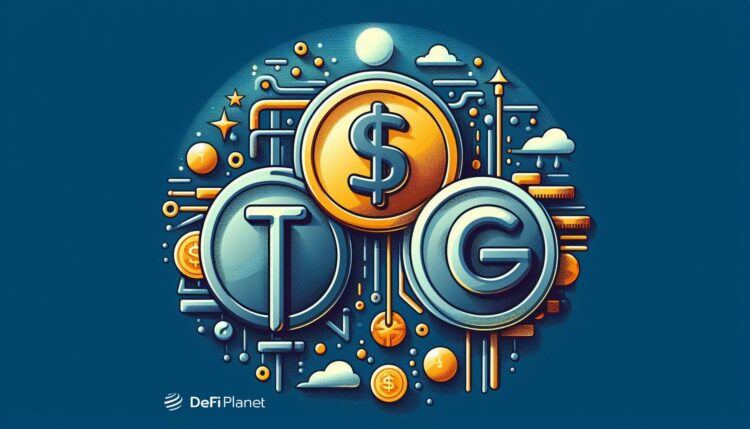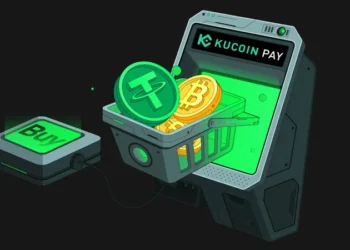The global stablecoin market is dominated by two products, USDC and USDT, despite their many flaws and equally many attempts to capture their market share. Stablecoin issuer Paxos has introduced yet another offering, but this time with bigger promises to resolve issues of transparency and stability that have long dogged the incumbents.
This new stablecoin offering called the Global Dollar (USDG), is touted by Paxos as built to “power the next wave of global stablecoin adoption. ” It is no question that USDG faces an uphill climb, but can it realistically take on the giants and capture market share?
This analysis tries to answer this question by examining USDG’s proposed benefits, and the challenges it will need to overcome to make an impact in the current state of the global stablecoin market.
Current State of the Stablecoin Market
To understand USDG’s chances of success, it’s essential to recognize the entrenched positions of USDC and USDT. Together, these two stablecoins account for over 80% of the stablecoin market by market cap and trading volume, with a combined valuation that exceeds $100 billion.

USDT, issued by Tether, and USDC, by Circle, each bring unique strengths that have made them indispensable to the crypto ecosystem.
USDT is the most widely traded stablecoin because it offers high liquidity. It is the go-to option for quick, high-volume trades across exchanges and DeFi platforms. On the other hand, USDC’s institutional backing and transparent reporting practices make it popular among regulated institutions and investors prioritizing stability and transparency. Also, the two stablecoins are well-integrated across exchanges, wallets, and payment platforms.
Given this dominance, USDC and USDT set a high bar for new stablecoins like USDG. To succeed, USDG will need not only a compelling value proposition but also strong partnerships and a unique market position to draw attention away from these leaders. So far, that has been fairly impossible, and Paxos knows that.
USDG’s Unique Proposition and Claims
Paxos presents USDG as a response to the criticisms that have plagued USDT and, to a lesser extent, USDC—namely, issues of transparency, operational standards, and regulatory compliance.

USDG’s primary distinction lies in the choice to launch it in Singapore. Paxos believes Singapore offers the regulatory clarity and oversight that could make USDG particularly appealing to institutions and users focused on regulatory adherence. Interestingly, the firm launched another dollar-backed stablecoin, Lift Dollar (USDL), in the same region a few months before the USDG launch.
USDG’s approach to compliance is notably rigorous. Paxos promises frequent asset attestations, ensuring that USDG remains fully backed and transparent and has regulatory oversight that exceeds typical standards.
The stablecoin issuer also appears to be trying to establish USDG as the “safe, transparent” alternative to capture the attention of institutional investors who value security and reliability.
Ronak Daya, Head of Product at Paxos, said:
“Enterprise interest in stablecoins has never been higher than it is today, but the market lacks a solution that combines regulatory compliance with real economic incentives for enterprises.”
Indeed, USDG has already garnered support from major industry players like Robinhood, Kraken, and others, signalling early confidence in Paxos’s new stablecoin offering.
However, Paxos will need more than regulatory alignment; building trust and widespread adoption will require targeted strategies and effective differentiation from existing options.
Challenges to USDG’s Adoption
While Paxos has laid out a clear vision for USDG, the stablecoin faces significant obstacles:
- Brand and Trust Factors
USDT and USDC are established brands with deep trust across the crypto ecosystem. Building similar levels of trust and visibility for USDG will take time and consistent reliability, which new entrants often find challenging in such a saturated market.
- Network and Integration
Both USDC and USDT have deep, widespread integrations across exchanges, wallets, DeFi protocols, and payment solutions. This extensive reach enables users to transact seamlessly across platforms. In contrast, USDG will need to negotiate and establish similar integrations from the ground up, which could limit its usability and reach in the short term. A robust network effect—where increasing adoption leads to even more users—is crucial in stablecoin success, and USDG will have to make substantial progress in this area to compete.
- Regulatory Constraints
Although Paxos has chosen to launch USDG in Singapore, it remains a U.S.-based entity with a history of interactions with American regulators. Given the evolving stance on crypto regulation in the U.S., there’s a possibility that USDG may still face scrutiny or restrictions that could impact its global positioning.
Additionally, Paxos’s U.S. origin may make some institutions wary of regulatory interventions, regardless of USDG’s Singaporean foundation. If U.S. regulators tighten control on stablecoins, Paxos’s positioning could present both compliance challenges and a potential limit on USDG’s market reach.
Final Thoughts
USDG may not dethrone USDC and USDT overnight, but it has the potential to capture market share in specific regulatory-conscious niches if it meets its operational claims. The promise of greater transparency and reduced risk of de-pegging events will appeal to risk-averse users.
Also, the choice of launching in the Asia-Pacific region, where local regulatory clarity and demand for compliant assets are high, is quite interesting. This regional focus could allow USDG to gain traction in markets where U.S.-based stablecoins face higher regulatory resistance or scrutiny. However, will this be enough to establish a lasting presence in the competitive stablecoin market? Only time will tell.
Disclaimer: This article is intended solely for informational purposes and should not be considered trading or investment advice. Nothing herein should be construed as financial, legal, or tax advice. Trading or investing in cryptocurrencies carries a considerable risk of financial loss. Always conduct due diligence.
If you would like to read more market analyses like this, visit DeFi Planet and follow us on Twitter, LinkedIn, Facebook, Instagram, and CoinMarketCap Community.
Take control of your crypto portfolio with MARKETS PRO, DeFi Planet’s suite of analytics tools.”





















